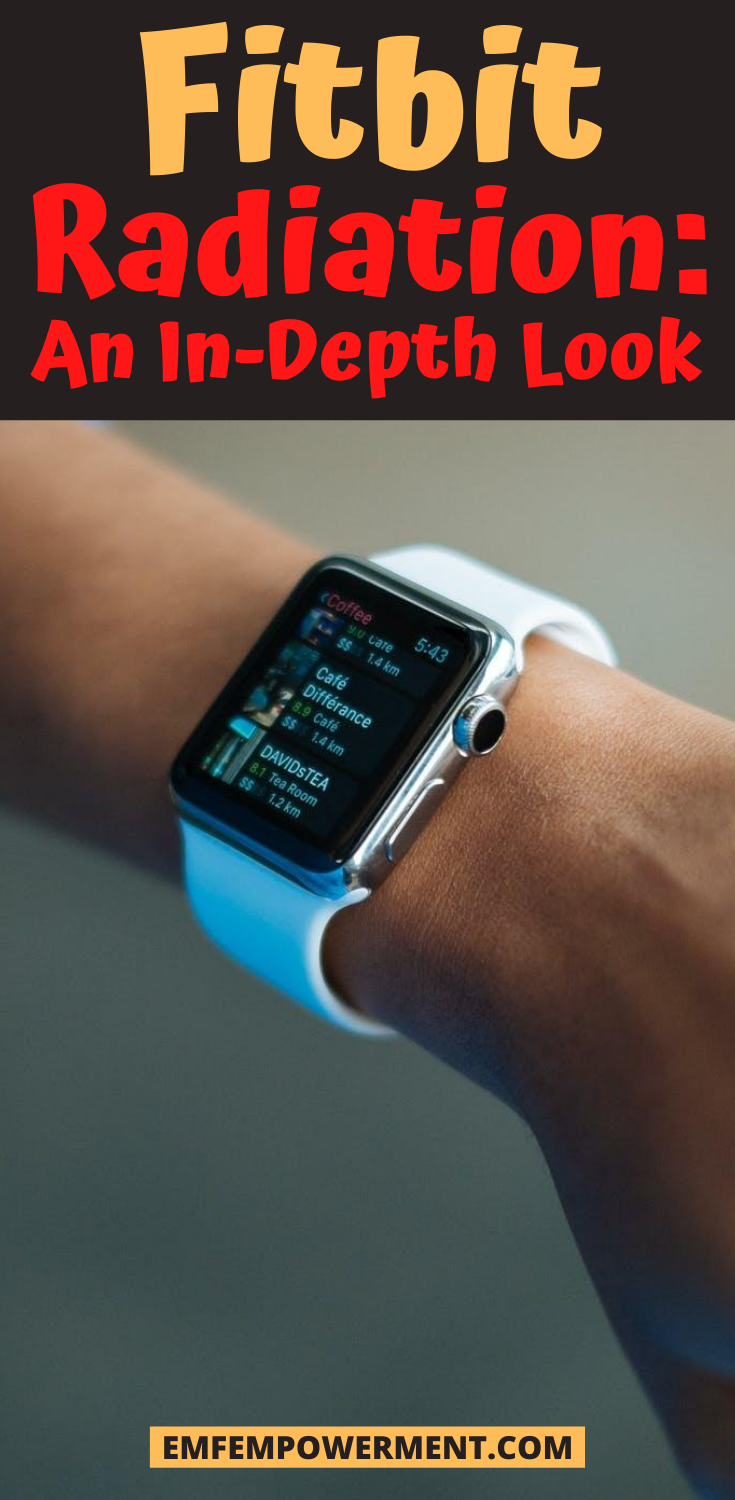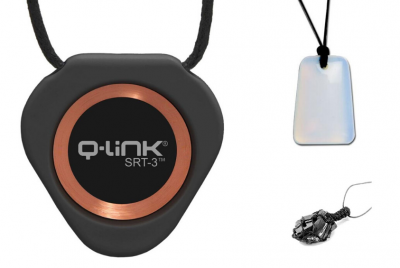When worn correctly, both Bluetooth and wired earbuds offer a lightweight and comfortable way to listen…
Fitbit Radiation: An In-Depth Look

*We may earn a commission for purchases made using our links. Please see our disclosure to learn more.
With over 28 million active users and over 100 million devices sold, Fitbit has transformed the fitness tracker industry. And while many find their devices to be motivational in reaching their fitness goals, it’s important to also be aware of the potential drawback of Fitbit usage.
In order to sync with your phone, your Fitbit produces a Bluetooth signal. At certain intervals throughout the day, your Fitbit communicates with your phone, transferring information such as your step count and heart rate. This allows you to track your data on the Fitbit app in realtime — a handy feature, no doubt.
The problem, however, lies with the Bluetooth signal. Bluetooth is a form of RF-EMF radiation, and there is no way to turn the signal off on the device. Even if it’s nowhere near your phone, the Fitbit will constantly be sending out a signal, attempting to communicate with a paired Bluetooth receiver. This means the device is producing radiation the whole time it’s powered on. And with the tracker situated on your wrist, that radiation is in close proximity to your body and vital organs.
SAR levels
Fitbit does not publish the SAR levels of its devices. They claim that the SAR values are significantly below that of a cell phone, which the FCC regulates at a maximum of 1.6W/kg.
For those who still want to know how much radiation their Fitbit produces, your best option is to use an EMF meter. If you don’t already own one, the TriField TF2 is an excellent meter. It can detect all three forms of EMF radiation, and it’s known for its fast and reliable readings. For other EMF meters, see the Best EMF Meters for Any Budget.
Once you’ve obtained your meter, you can measure the radiation output from your Fitbit device. You can do this by taking two measurements, one with the device powered on, and one with it powered off. Place the meter near your device to mimic its placement against your wrist, and take a reading with the device off. This is your base measurement for comparison.
Now, power the device on and continue holding the meter near the Fitbit. Watch as the values change and spike. The readings will likely be fluid and will increase whenever the Fitbit sends out a Bluetooth signal. The highest value is the one you want to make note of.
Compare the measurements to find out how much radiation your Fitbit is exposing you to. For an example of how to do this, check out the following video.
Health risks
There are several health risks associated with exposure to RF-EMF radiation. The World Health Organization’s International Association for Research on Cancer recognizes RF-EMF radiation as “possibly carcinogenic to humans”. This designation is based on a study where rats were exposed to radiofrequency signals and subsequently developed heart and brain tumors. To learn more about research into EMF radiation, see the Top 30 Studies on EMF Radiation.
Aside from cancer, RF-EMF radiation has also been tied to issues with sperm motility and quality in men. And in women, it’s been shown to increase the risk of miscarriage. Furthermore, some individuals experience a number of uncomfortable symptoms when exposed to even small amounts of RF-EMF radiation — something known as Electromagnetic Hypersensitivity. An individual with EHS may experience headaches, insomnia, fatigue, depression, itchiness, and rashes when wearing a Fitbit.
It has been proposed that the rashes some Fitbit users complained of could be due to EHS. This has not been studied or proven. Still, if you do experience a rash it’s probably wise to discontinue your usage.
Protecting yourself
If you’ve already invested in a Fitbit, or you’re considering taking the plunge, you may be wondering if there are things you can do to wear your device safely. Unfortunately, because Fitbit does not allow you to disable Bluetooth on their fitness trackers, there is very little you can do about the amount of radiation produced by the watch. There are, however, steps you can take to help lower the risk to your health.
- Take the device off at night while you sleep. While the sleep tracking function is an attractive feature, if you’re concerned about EMF exposure it probably isn’t one you want to use all the time. Sleep is a very restorative time for the body, so anything you can do to minimize your EMF exposure at night — including taking your watch off and storing it away from your bed — is going to be beneficial. If you’re interested in tracking your sleep, do so for a couple of weeks maximum and then get back into a routine of taking the watch off before bed.
- Opt for a lower EMF alternative. If you haven’t already invested in a Fitbit, there are several lower-EMF options on the market. These watches allow you to disable WiFi and Bluetooth, allowing for a much lower-EMF experience. Garmin Vivosmart HR is one such option, allowing users to track their steps, altitude, and heart rate while syncing with your phone at a later time. For other lower-EMF fitness trackers, see our guide to Fitness Trackers Without Bluetooth.
- Minimize your exposure elsewhere. If you must use a Fitbit, it may be worthwhile to take steps to reduce your exposure around the home and beyond. Lowering your overall exposure levels will reduce the risk to your health from EMF radiation. Consider switching your home over to wired internet from WiFi, installing a smart meter cover, and other whole-house protection measures. For more on what you can do, check out our guide to Whole-House Protection.
- Take supplements. Supplements, herbs, and vitamins are a great tool to have in your arsenal against radiation. While many supplements have beneficial properties, one in particular — Ginkgo Biloba — may help protect against the RF-EMF radiation produced by your Fitbit. The Ginkgo tree was a central component of a study on RF-EMF exposure and rats. The rodents were exposed to RF radiation for at least one hour per day. Some were given Ginkgo Biloba, and some were not. Those that received the supplement experienced less cell phone-induced oxidative stress. It’s possible, then, that taking a Ginkgo Biloba supplement could help reduce the risk of cancer and other health problems from RF-EMF exposure. For more on supplements that can protect against radiation, see our guide to the Top 10 Anti Radiation Herbs and Supplements.
Final thoughts
Fitbits can do great things for our health, but they do carry with them risks. A simple pedometer can work in much the same way, without the added RF-EMF exposure. If you must use a Fitbit, take steps to reduce your exposure, and minimize your overall risk. 



